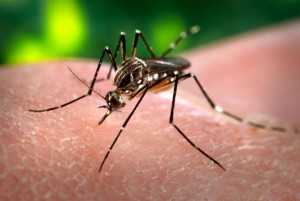
No, I’m not one. But the folks who run the Ask an Entomologist site are. You can ask them anything about bugs, and some of their best posts result from questions that come from kids.
Don’t think of it as a place for identification, although they’ll do their best to answer, or direct you to a good place where that can happen; think of it as a way to prompt them to explain some aspect about the science of Entomology that may not be well understood by the general public.
From their About Section
If you’re interested in how insects are related to one another, how they work on the inside, how they behave, current events in the news, or anything else … you’ve come to the right place.
And here’s how they addressed the identification part in a recent post, introducing the science of Taxonomy:
Please don’t take this the wrong way. We *want* to help you, we’re just not qualified. Insects make up 58% of the biodiversity on the planet, with beetles alone consisting of over 350,000 species. People who study scarab beetles may not even have the expertise to help you identify your sap beetle. Joe and I are just two people, and two people just can’t know all the bugs. That’s why we refer you to places where many people with various areas of expertise are present.
And they’re not afraid to tackle controversial issues, with explanations and links to the science to explain how something works. This one, for example, which addresses the Sterile Insect Technique (SIT) using the new process of genetic engineering to create the sterile insects.
People have asked Nancy and me a lot of questions about the sterile GMO mosquitoes the British company Oxitec is planning to release in Florida. We get these questions on a Facebook page we administrate as well as through this blog. People are really curious about what’s going on with these mosquitoes, and we’re really excited to talk about them!
Since I used to be responsible for a mosquito management program targeting the mosquitoes that spread West Nile Virus, as well as provide general public pesticide education, that post provided a great deal of clarity on the whole topic. In particular, the part about Rachel Carson and a quote from her seminal work, Silent Spring, which endorsed SIT as a way to reduce dependence on pesticides; a way to selectively manage a pest in a local area at the species level. That means zero impact on non-target species. What an exciting possibility!
Two other places I follow to learn more general things about bugs and insects are Gwen “Bug Girl” Pearson, and the Facebook Page Relax, I’m an Entomologist.
For a more specific understanding of pests in and around the home, there’s Insects in the City and everything you need or want to know about ticks, and how to protect yourself from them, Tick Encounter Resource Center.
Thanks so much for this shout out =D It was a very flattering synopsis about what we do ^.^
~Nancy
You’re welcome, and thanks back for the site!
People who share their time and talent to educate, and do it as a matter of personal motivation, are very high on my list of trusted sources, so those are the places I want to share with others.
Cheers!
a) What is your job position/title? Where is your workplace (city, state, country)? How long have you been in clinical practice for?
b) What is the most memorable/interesting or common problem/disease you have had to treat a patient for that was caused by an insect or arachnid ?
c) How did you mitigate or treat this problem/disease?
d) What is the problem/disease that you are most concerned about emerging in the future and threatening animal/human health that is caused by insects or arachnids?